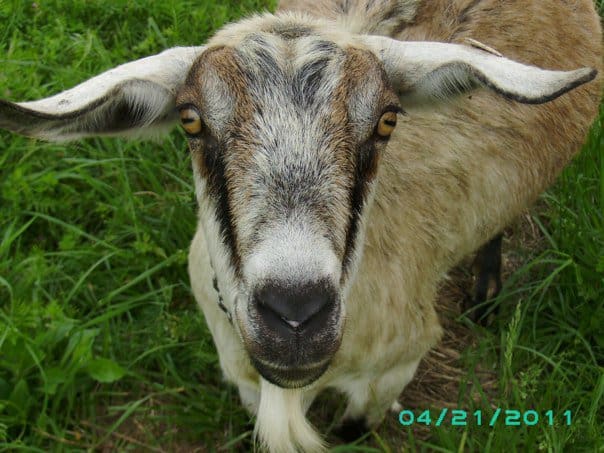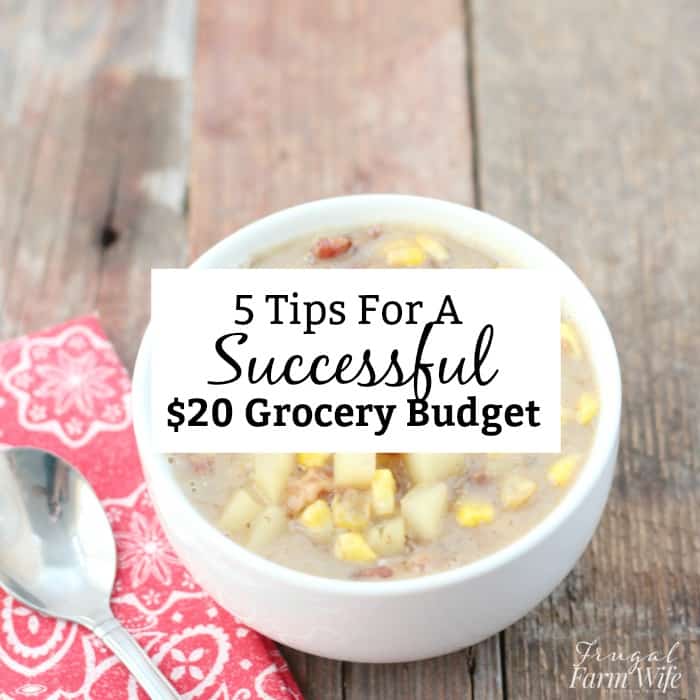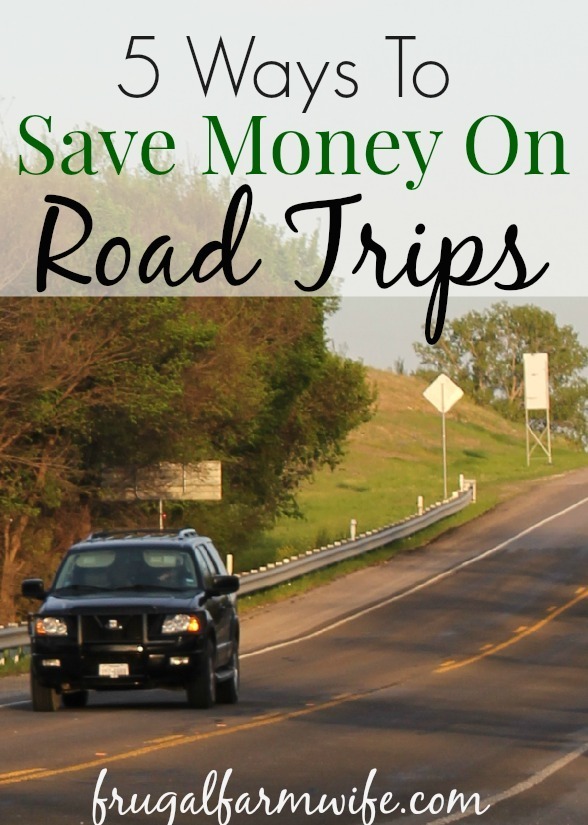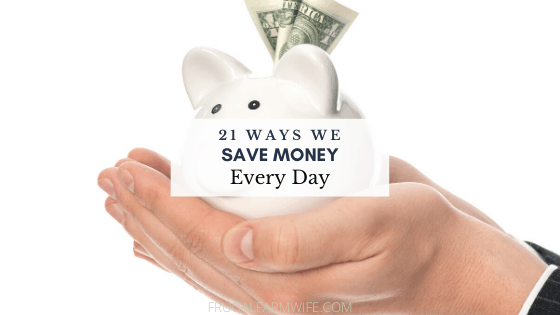Dairy Goats: Can They Save You Money?
As many of you already know, we recently became dairy goat owners again. So I suppose it’s no surprise that goats are so much on my mind lately.
Something about goats that continually astonishes me is how low-maintenance they are. Oh, they want you to think they’re high maintenance, alright, whining if they even think it’s going to rain and all that, but their actual requirements are surprisingly low.
Mostly, I’m referring to how much they eat. Vanilla currently consumes one quart of alfalfa pellets per feeding/milking, which is a twice-daily occurrence. Other than that, she subsists solely on roughage she grazes in the backyard on her picket line. Well, that and water.
I’m convinced that with a little management, a single dairy goat could be kept in the average backyard.
So what would it take to get into the family dairy business?
- A goat, of course. Preferably a bred doe. This could run you anywhere from $100 – $300, depending on how fancy you decide to get.
- Grass and/or hay. The grass is best, of course. As I said above, The average backyard really should be able to provide the needed roughage.
- A picket line or portable fence system. If you let the goat have access to the entire yard at one time, the good stuff will never have a chance to re-grow since she’ll always eat that first. Thus, the need for a picket line.
- Shelter. As I mentioned, goats aren’t overly fond of rain. A large dog house should do the trick, although you may need to make the entrance larger. I did a quick search on Craigslist and found a really nice one for $40.
- Alfalfa pellets or hay. We supplement with alfalfa rather than the traditional goat feed for extra nutrients in the interest of remaining entirely grass-fed. Our goat eats one quart at each milking (twice a day). At that rate, a 50-pound bag ($15) should last about a month.
- A container for milking (preferably stainless steel). $15? Unless you get fancy and get a seamless stainless steel heavy-duty milk pail. Those cost a fortune but can be worth it in the long run.
- Milk filters. My favorite? A nylon curtain from goodwill, sterilized and cut into 12” square sections. These can be washed and reused almost indefinitely. Should cost $2 or less.
- Jars. Quart jars, half gallon jars, spaghetti sauce jars, whatever suits your fancy.

Our current milker, Vanilla. I tried to get a picture of her yesterday on her picket
line, but neither she, nor my photobombing toddler would cooperate.
Now for a cost breakdown.
Let’s say you’ve never milked before, and your lack of skill causes your goat to lose production, so she only gives 1/2 a gallon per day. That’s 3 1/2 gallons every week or roughly 14 gallons per month.
I think it’s safe to say that quality milk for $3 a gallon would be a really good deal, that would come out to $42 for those 14 gallons, but with your own goat, you only spent $15 on feed. Hopefully, but we should create some wiggle room and say you budget $25/ month for goat upkeep. Still a great deal.
Of course, that figure doesn’t take the initial cost of the goat and all her …stuff… into consideration.
You could go all out and buy a registered doe for roughly $300. The benefit to this would be the ability to sell registerable kids for a lot more than cross-bred kids. You also have a much better guarantee that she’ll be a good milker.
On the other hand, you could get an unregistered doe for perhaps $100. The quality of her udder and teats may or may not be as good. We once bought a Nubian/Sanaan crossbred doe for $100. She ended up being slightly harder to milk than our registered Nubians. When she kidded, she had two doelings which we sold for $75 each at 3 months old. Not a bad deal, eh?

Our wonderful cross-bred doe, affectionately named Tri-Pod because, yes, she has three legs.
Okay, let’s assume you go with the registered goat. If she’s fairly young, she should last you for several years, but let’s average the cost out over two years just to be on the safe side.
Your first-year expenses would be:
- $150 for the goat
- $40 for the shelter
- $20 for the picket line
- $30 for milking containers/jars/filters
- $180 for feed
Total cost: $420
$420 for 182 gallons of milk (sticking with our low figure of 3.5 gallons per week) equals $2.30 per gallon of milk.
If that’s more milk than your family will use (as milk), and it’s certainly more than we use, keep in mind that you can make your own delicious yogurt and cheese, which cost even more than milk does.
Since you went with the registered doe, it seems reasonable to assume that you could expect to average $200 a year selling her kids at 3 months old. We’ve sold 3-month-old doelings for as much as $250 each; the bucks, however, often sell for as little as $50 each.
We always hope, of course, for twin doelings but seldom ever get it. One of each seems to be the most common, but occasionally, we get twin bucks. That’s always a bummer.
So now, if you’re a neighborhood dweller, the big question is, what are your neighborhood rules?
Get Your Garden Cheat Sheets!

Want to know exactly when, where, and how to plant your vegetables? Sign up to get our FREE companion planting guide, and garden planting cheat sheet printable.






7 Comments